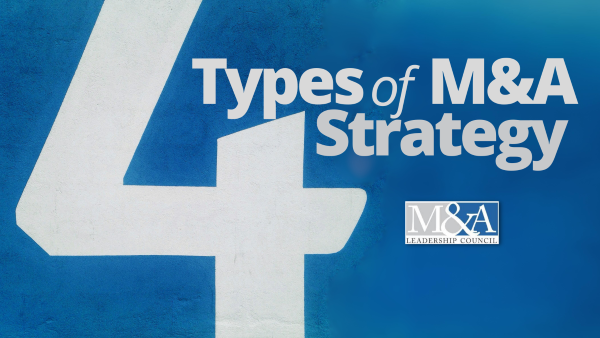4 Types of M&A Strategy
The Art of M&A® / Strategy
An excerpt from The Art of M&A, Sixth Edition: A Merger, Acquisition, and Buyout Guide by Alexandra Reed Lajoux
What are the main kinds of M&A strategy?
As mentioned earlier, the main kinds of M&A strategy are portfolio-building, cost cutting, revenue boosting, and hedging via strategic options.25 As explained in the next section, these strategics can be achieved via various directions (horizontal, vertical, diagonal/diversifying).
What is a portfolio strategy for M&A?
A portfolio strategy for M&A is the path a company chooses to diversify its products and markets. The portfolio company is an enterprise composed of multiple independent companies obtained through acquisition. Portfolio companies have varying investment philosophies and varying governance structures.23 A good example of a portfolio company is Alphabet, the parent of Google (see Exhibit 2-12).
|
Exhibit 2-12 Alphabet’s Portfolio Strategy |
|
Alphabet is a collection of businesses — the largest of which is Google. We report Google in two segments, Google Services and Google Cloud; we also report all non-Google businesses collectively as Other Bets. Alphabet’s structure is about helping each of our businesses prosper through strong leaders and independence. |
|
Alphabet Annual Report February 2023 |
A corporate portfolio builder may make investments for a variety of reasons as described later in this chapter.
■ To reduce risk by diversifying into a new sector. This is the classic capital asset pricing model for portfolio management
■ To improve returns on investment by buying a better-performing stock
■ To gain tax credits by buying a business that offers these
■ To complement an existing investment for strategic reasons
■ To create a kind of franchise through a roll-up
A typology of business portfolio companies can be defined by the differing roles of the entity that leads them—often called the parent company or corporate center. Just as the C-suite at the headquarters any business will have a bearing on the entire company, in a portfolio of businesses, the parent can add value by making changes to the portfolio and/or by improving the performance of the units.
The roles of a parent can vary widely. McKinsey has identified six types of corporate centers: the more traditional roles of strategic driver, financial holding, and operator; as well as newer roles as adjuster and dynamic entrepreneur, which have become more prominent following the disruptions of COVID-19.26
What is an example of a cost-cutting strategy using M&A?
Many industries undergo periods of consolidation, triggered by companies’ needs for greater scale or scope. They need larger scale to compete in a changed market and/or broader scope to achieve superior competitive position. When companies buy others for scale or scope reasons, revenues get an automatic boost while cost-per-sale declines. Simply put, sales volume for two companies is higher than sales volume for one, and it usually takes less than twice the costs to run a company twice the size. The availability of such economies of scale has been the principal motivation of many corporate combinations, particularly mergers of equals. (We use the term corporate combinations to include mergers or acquisitions that result in a new, larger integrated entity. This is distinct from acquisitions made by holding companies, after which the target remains a separate company held as a subsidiary or holding.)
Consolidation opportunities can be classified based on the part of the value chain that offers the consolidation benefit or “synergy.” Examples include:
■ In research and product development, the synergies usually relate to the ability to better diversify risks and optimize the development process across a broader research and development portfolio.
■ In operations, the major cost savings are usually found in operations—larger purchasing scale, the elimination of manufacturing and distribution redundancies, reduction of data centers by moving to public and private clouds, and the consolidation of corporate headquarters.
■ In sales and marketing, the cost savings potential is usually less important than the revenue potential afforded by brand and marketing scale and scope.
■ In technology, cost cuts come from reducing the number of information systems and the number of IT people who support those systems. Reducing the number of IT systems and people must be handled carefully and may take longer than planned originally.
What is an example of a revenue-growth strategy using M&A?
There are four main ways to use acquisitions in profitable growth:
1. Growth within a current market with current product offerings
2. Growth within a current market with new products
3. Growth into a new market with current products
4. Growth into a new market with new products
In each case, there could be a buy-versus-build decision. That is, if there is growth potential available, is it best achieved via acquisition or organically? While most acquisitions cover more than one of these four vectors, the categorization listed here can provide a convenient framework for examining the unique issues associated with each.
In addition to building a portfolio, cutting costs, or increasing in size, is there any other basic M&A strategy?
Yes; when it comes to buying companies, some of the highest value strategies may not create value directly, but rather will position the company for possible subsequent steps that could create value depending on future circumstances. These possible subsequent steps can be considered as options—that is, real options to distinguish from stock options.
Real options are like stock options, but instead of deriving from stock they derive from real capital assets.27 A stock option is a right that allows the holder to acquire a certain number of shares of a certain stock during a future period of time called the exercise period, at a predetermined price called the exercise price. If the value of the stock goes higher than the exercise price during that period, then the holder is in the money and can choose to exercise the option. However, if the value of the stock is lower than the exercise price during the exercise period, the holder is under water, and the holder can then choose not to exercise. In this case, the option expires worthless, but at least the holder’s loss may be less than the decline in the underlying shares.
The situation with a real option is parallel. A real option is a physical asset, not a stock, but like the holder of stock option, the holder of the real option is in a position to make further investments in the future that could pay off under favorable circumstances. If the future circumstances are unfavorable, the subsequent investments need not be made. As long as the original real asset has some value, the purchase makes sense. However, the value of the original real asset may diminish in value—and even become totally worthless, like an underwater stock option—if the future opportunity that was envisioned turns out to be something not worth pursuing.28
Are real options quantifiable?
Yes, within a range. One method is to identify a security with parallel characteristics and to extrapolate the market’s valuation of that security to a valuation of the real option. Another method involves identifying and estimating the key variables—for example, the exercise price/cost, the probability of a favorable outcome, and the return under a range of plausible future scenarios.
What types of real options can be found in acquisitions?
The options that can be provided through an acquisition generally fall into one of three categories:
■ Growth options, which provide the potential to pursue alternate markets in the future
■ Flexibility options, which allow for different ways to exploit acquired assets in alternative future scenarios
■ Divestiture options, which mitigate risk by enabling a company to dispose of all or part of an acquisition in the future
_________________________________________________________________________
25 The following discussion of M&A strategies draws from the strategy title in The Art of M&A series: Kenneth Smith and Alexandra Reed Lajoux, The Art of M&A Strategy: A Guide to Building Your Company’s Future Through Mergers, Acquisitions, and Divestitures (New York: McGraw-Hill Education, 2012), with updated examples to illustrate Smith’ insights. Kenneth W. Smith (1952-2020) was a deep strategic thinker who made lasting contributions to this book and to the M&A Leadership Counsel, where he was a founding advisor.
27 The concept of “real options” has had global following for more than a quarter century. Since 1997, there has been an annual global conference on the topic. See . Classic works include Aswath Damodaran, “Real Options, Acquisition Valuation and Value Enhancement,” January 2012 white paper, http://people.stern.nyu.edu/adamodar/pdfiles/
eqnotes/packet3a.pdf; Richard Shockley, An Applied Course in Real Options (Thomson South-Western Finance, 2006); Jonathan Mun, Options Analysis: Tools and Techniques for Valuing Strategic Investment and Decisions, 2nd ed. (New York: Wiley, 2005); and Thomas Copeland and Vladimir Antikarov, Real Options: A Practitioner’s Guide (Texere, 2001). All are available on standard bookseller websites.
28 Benjamin Forestier of INSEAD notes in his review of this chapter that for this reason, real option pricing for startups has lost favor in France.
_________________________________________________________________________
Learn more about mergers, acquisitions and divestitures at M&A Leadership Council’s virtual or in-person training courses. Network with other M&A professionals while our expert consultant trainers will get you ready for your next transaction (or help an ongoing one) through practical insights, group discussions, case studies, and breakout exercises.
Lajoux, Alexandra Reed with Capital Expert Services. The Art of M&A, 6th Edition: A Merger, Acquisition, and Buyout Guide. United States of America: McGraw Hill, 2024.







